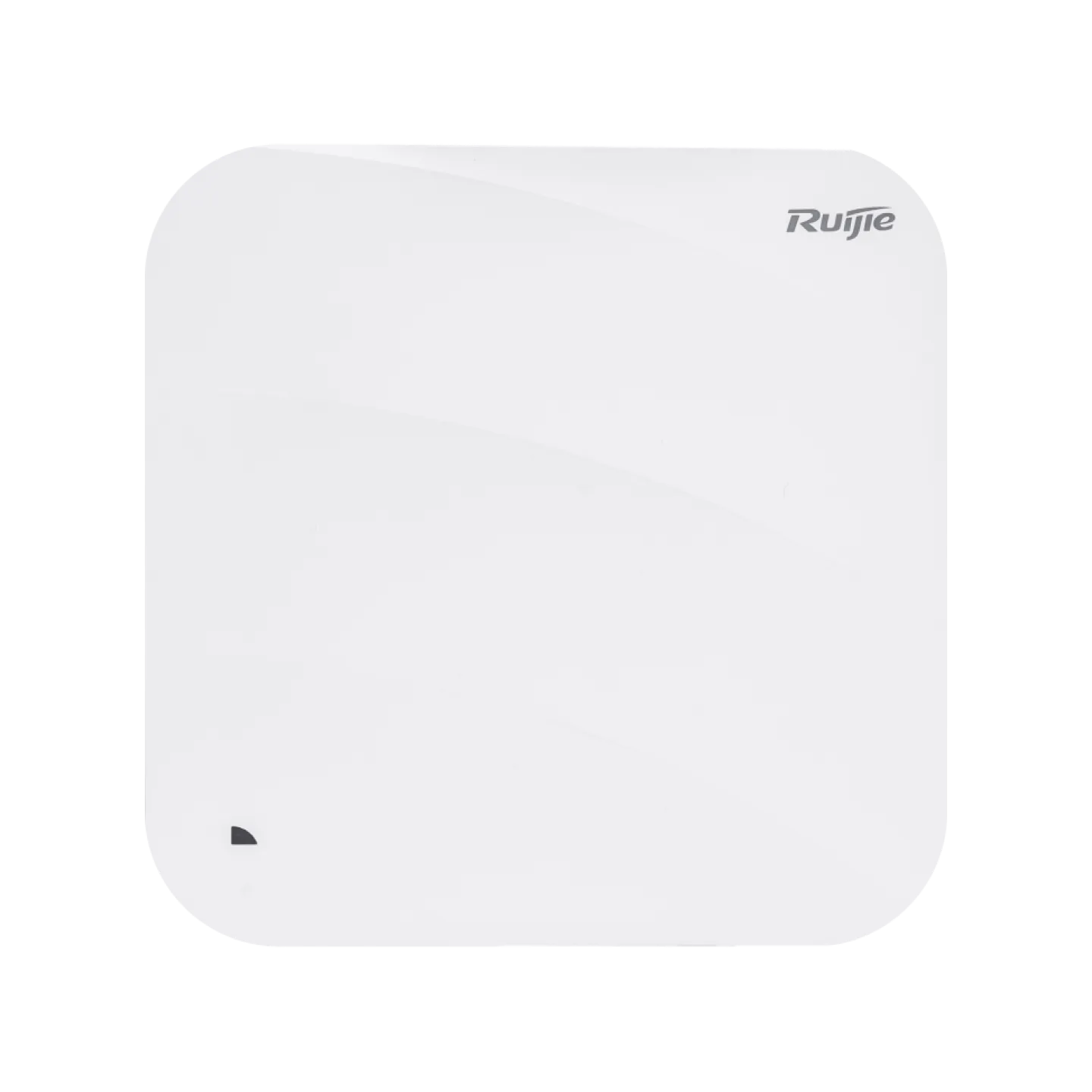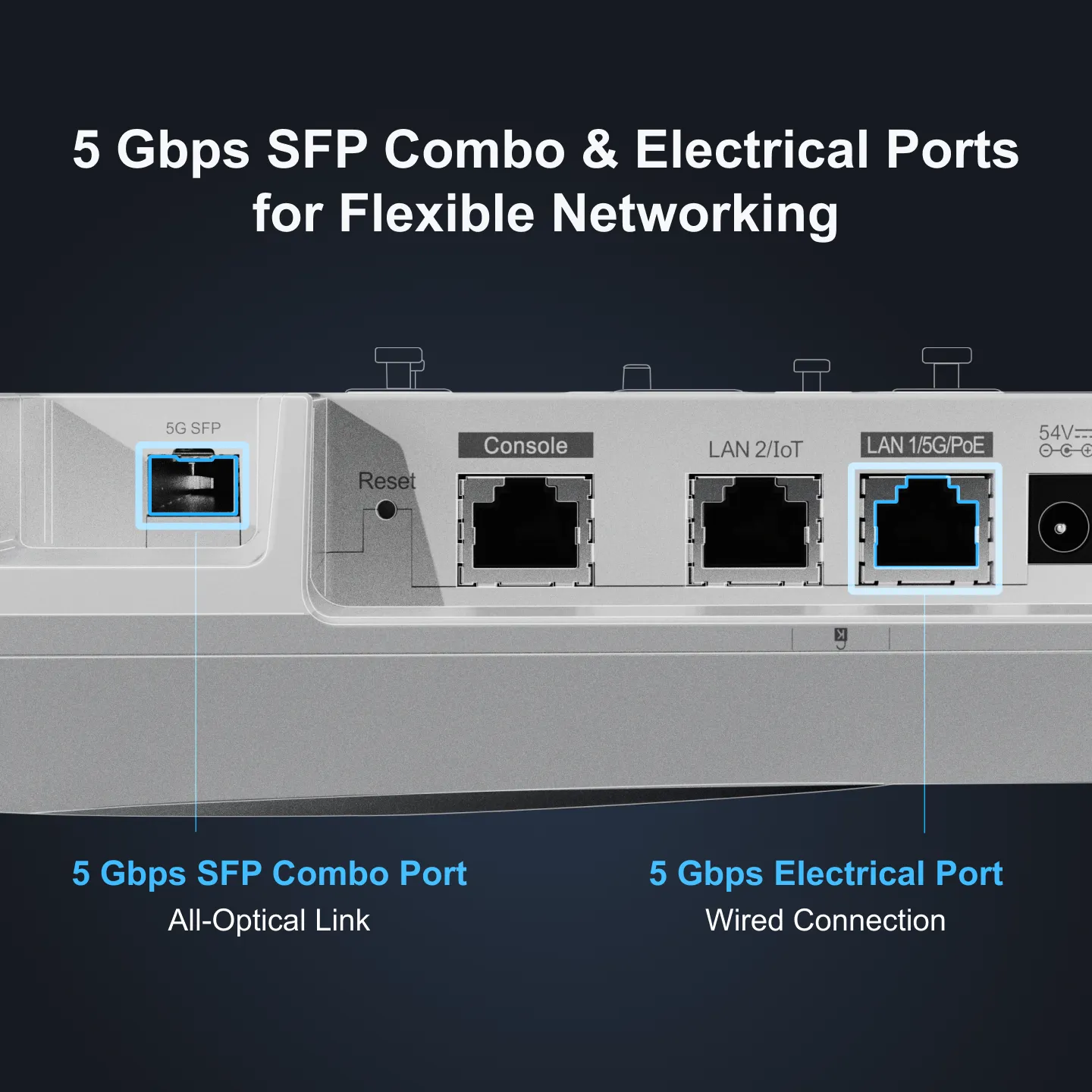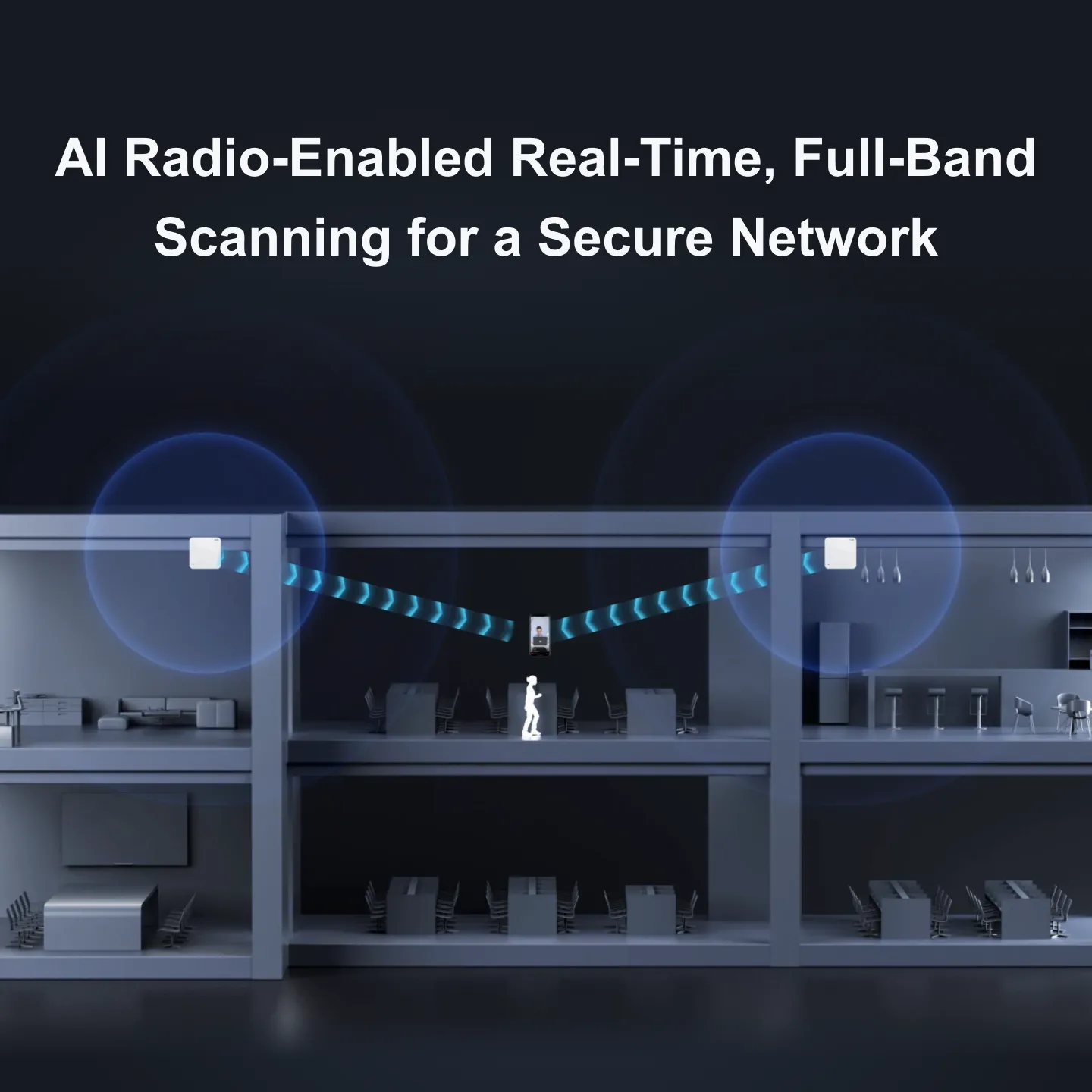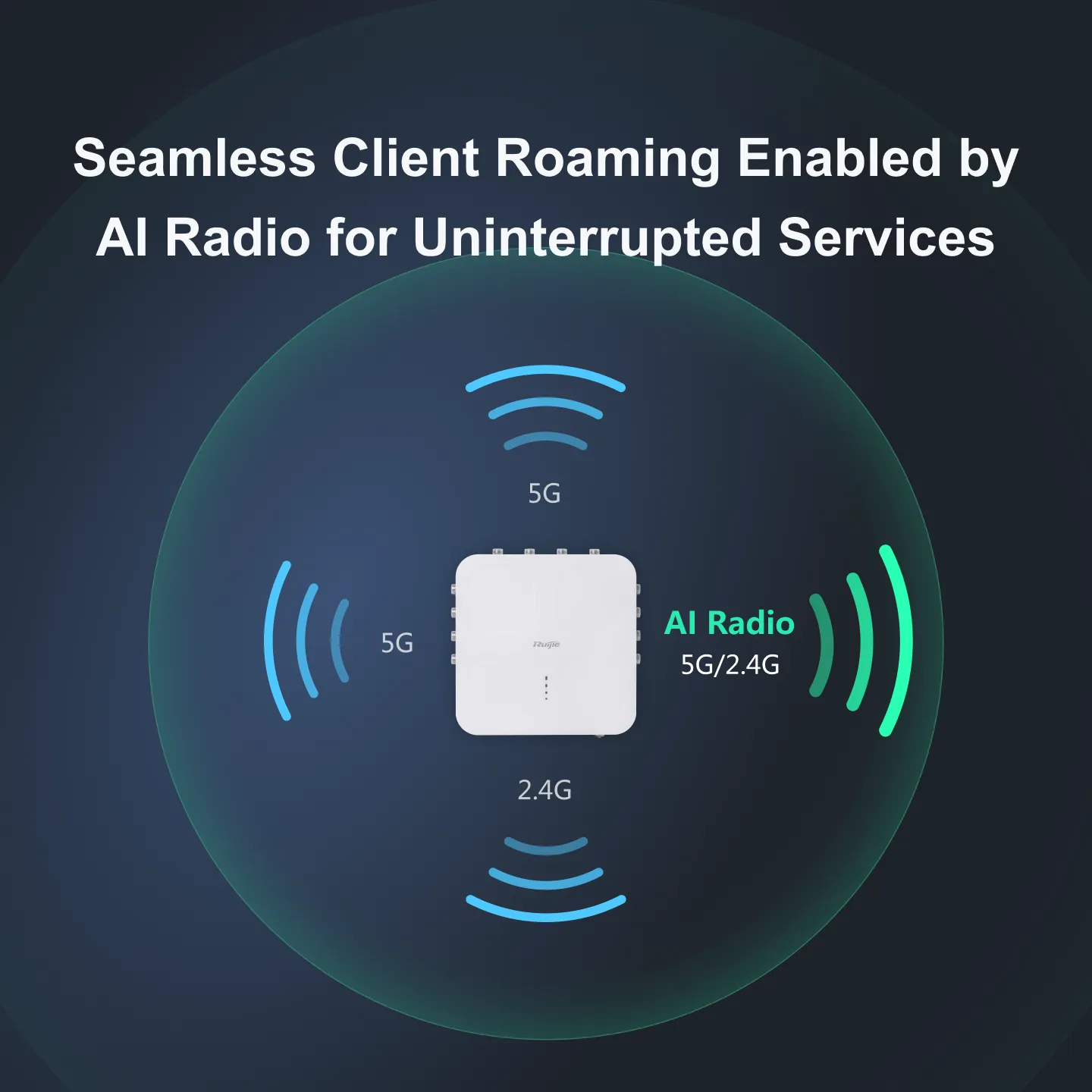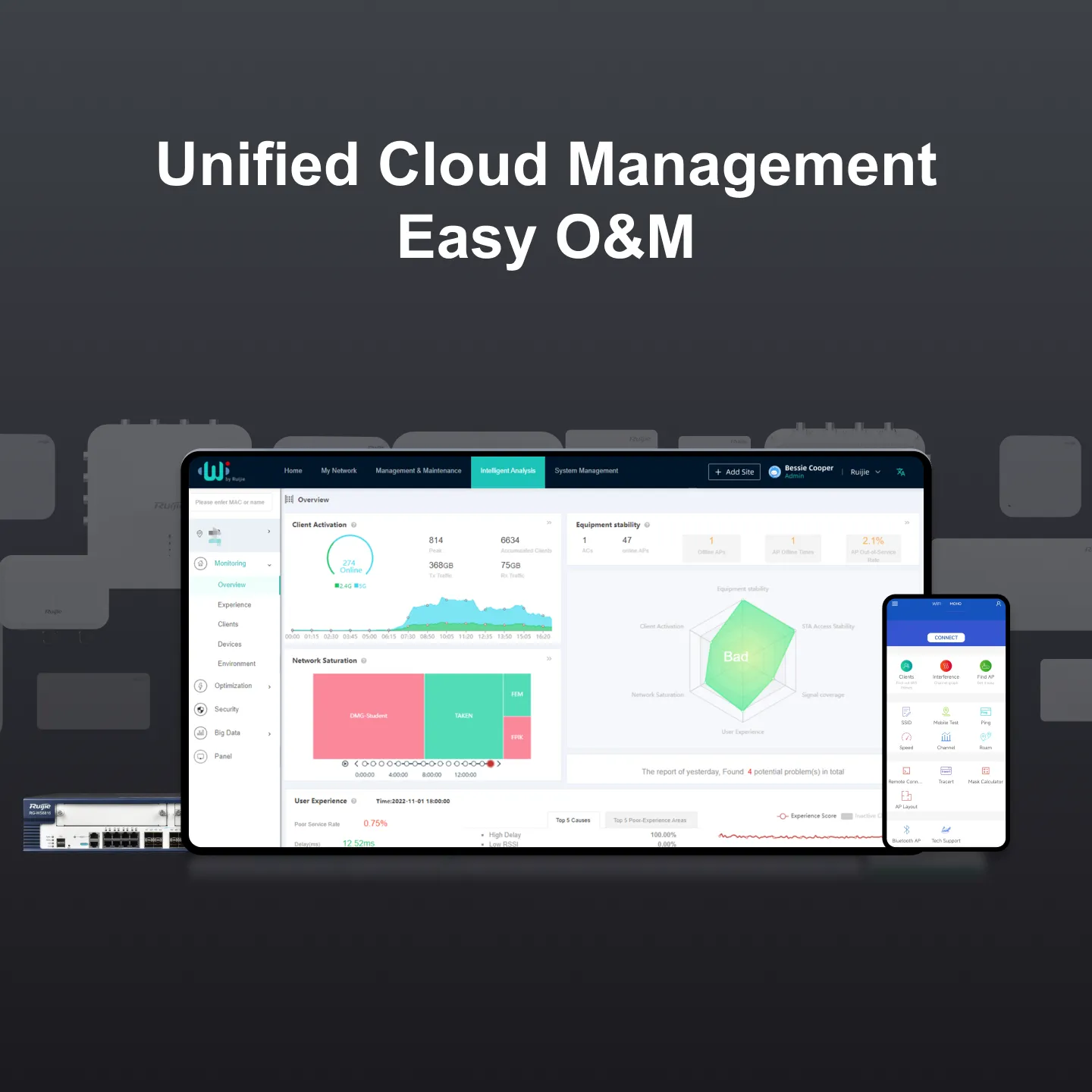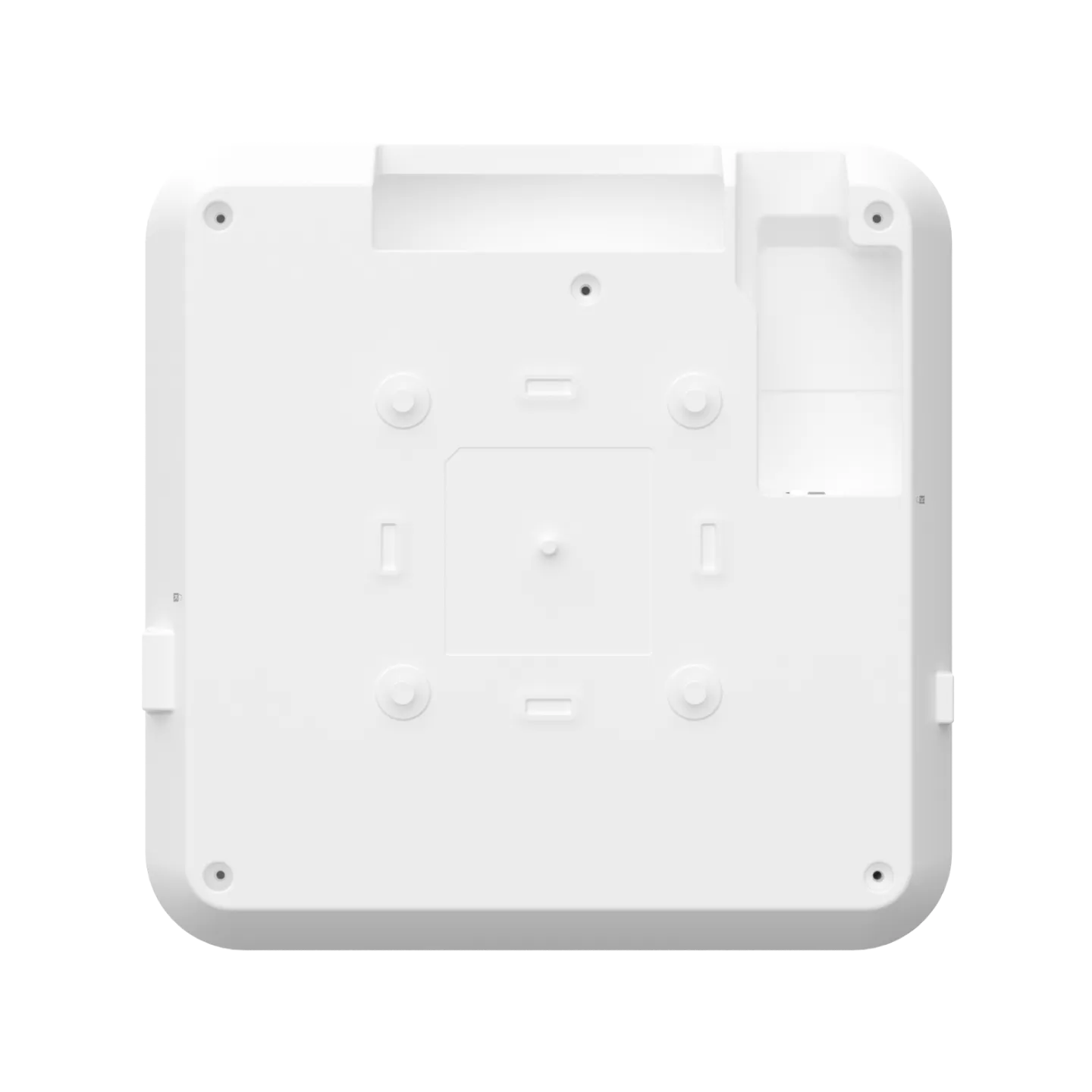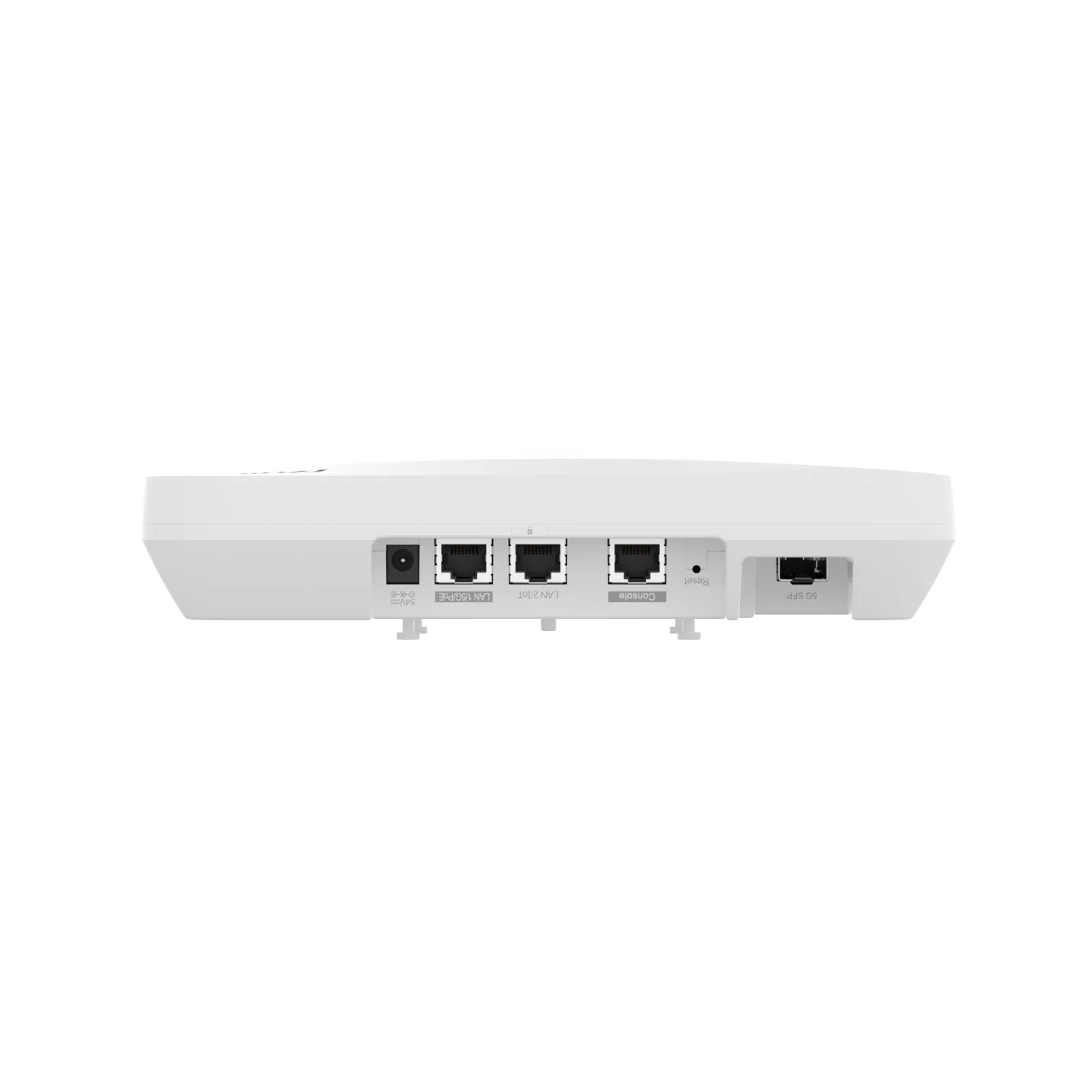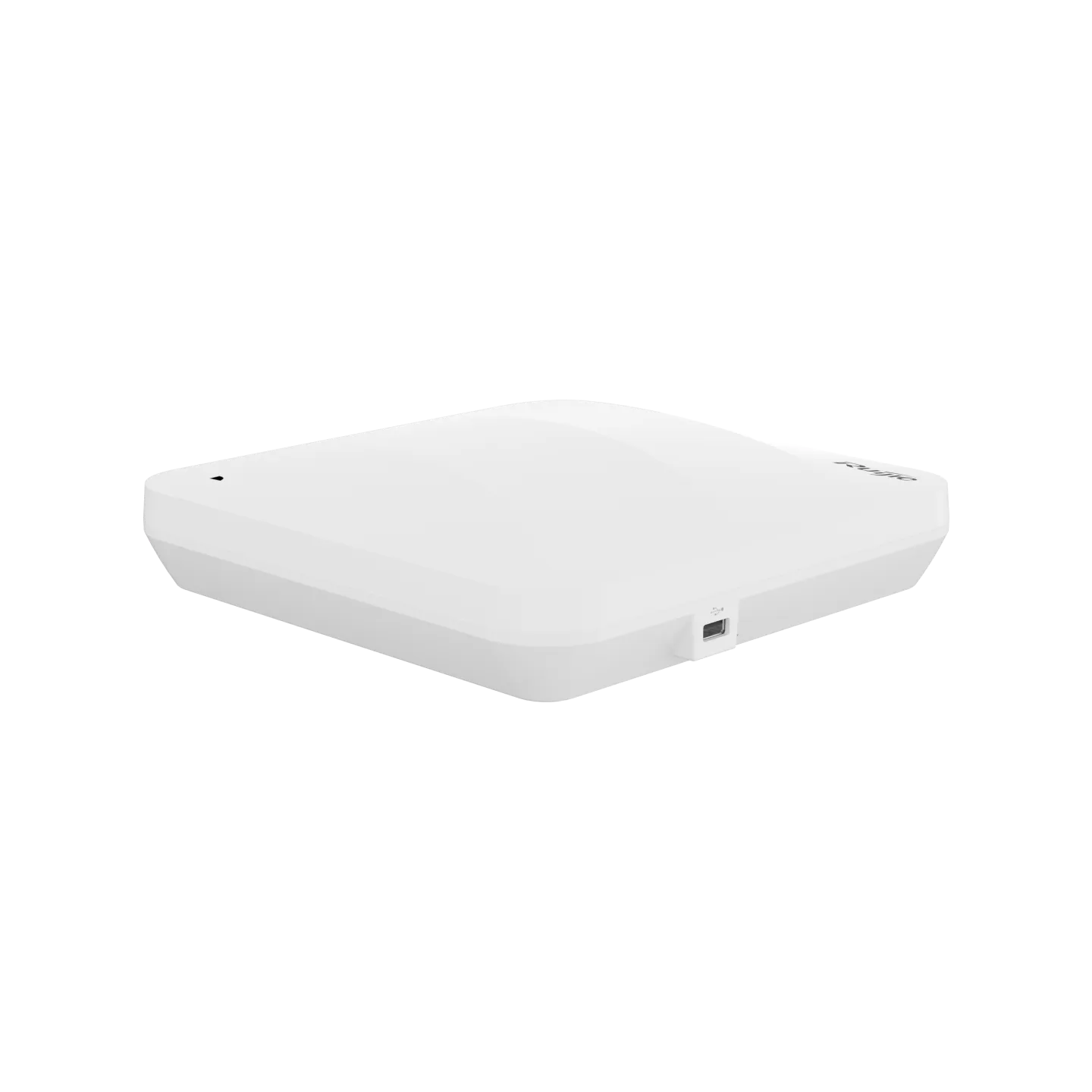| Hardware Specifications |
RG-AP850-AR(V3) |
| 802.11n |
Eight spatial streams ● Radio 1 – 2.4 GHz: 2x2 MIMO, two spatial streams ● Radio 2 – 5 GHz: 2x2 MIMO, two spatial streams ● Radio 3 – 5 GHz: 2x2 MIMO, two spatial streams ● Radio 4 –2.4 GHz/5 GHz: 2x2 MIMO, two spatial streams Channels: ● Radio 1 – 2.4 GHz: 20 MHz and 40 MHz ● Radio 2 – 5 GHz: 20 MHz and 40 MHz ● Radio 3 – 5 GHz: 20 MHz and 40 MHz ● Radio 4 –2.4 GHz/5 GHz: 20 MHz and 40 MHz Combined peak data rate: 1.2 Gbps ● Radio 1 – 2.4 GHz: 6.5 Mbps to 300 Mbps (MCS0 to MCS15 ) ● Radio 2 – 5 GHz: 6.5 Mbps to 300 Mbps (MCS0 to MCS15) ● Radio 3 – 5 GHz: 6.5 Mbps to 300 Mbps (MCS0 to MCS15) ● Radio 4 –2.4 GHz/5 GHz: 6.5 Mbps~ 300 Mbps (MCS0 ~ MCS15) Radio technologies: Orthogonal Frequency-Division Multiplexing (OFDM) Modulation types: BPSK, QPSK, 16-QAM, 64-QAM Packet aggregation: ● Aggregate MAC Protocol Data Unit (A-MPDU) ● Aggregate MAC Service Data Unit (A-MSDU) Dynamic Frequency Selection (DFS) Cyclic Delay/Shift Diversity (CDD/CSD) Maximum Ratio Combining (MRC) Space-Time Block Coding (STBC) Low-Density Parity Check (LDPC) Transmit beam-forming (TxBF) |
| 802.11ac |
Six spatial streams ● Radio 2 – 5 GHz: 2x2 MIMO, two spatial streams ● Radio 3 – 5 GHz: 2x2 MIMO, two spatial streams ● Radio 4 – 5 GHz: 2x2 MIMO, two spatial streams Channels: ● Radio 2 – 5 GHz: 20 MHz, 40 MHz, 80 MHz, and 160 MHz ● Radio 3 – 5 GHz: 20 MHz, 40 MHz, 80 MHz, and 160 MHz ● Radio 4 – 5 GHz: 20 MHz, 40 MHz, and 80 MHz Combined peak data rate: 4.333 Gbps ● Radio 2 – 5 GHz: 6.5 Mbps to 1.733 Gbps (MCS0 to MCS9) ● Radio 3 – 5 GHz: 6.5 Mbps to 1.733 Gbps (MCS0 to MCS9) ● Radio 4 – 5 GHz: 6.5 Mbps to 0.867 Gbps (MCS0 ~ MCS9) Radio technologies: Orthogonal Frequency-Division Multiplexing (OFDM) Modulation types: BPSK, QPSK, 16-QAM, 64-QAM, 256-QAM Packet aggregation: ● Aggregate MAC Protocol Data Unit (A-MPDU) ● Aggregate MAC Service Data Unit (A-MSDU) Dynamic Frequency Selection (DFS) Cyclic Delay/Shift Diversity (CDD/CSD) Maximum Ratio Combining (MRC) Space-Time Block Coding (STBC) Low-Density Parity Check (LDPC) Transmit beam-forming (TxBF) |
| 802.11ax |
Six spatial streams ● Radio 1 – 2.4 GHz: 2x2 uplink/downlink MU-MIMO, two spatial streams ● Radio 2 – 5 GHz: 2x2 uplink/downlink MU-MIMO, two spatial streams ● Radio 3 – 5 GHz: 2x2 uplink/downlink MU-MIMO, two spatial streams Channels: ● Radio 1 – 2.4 GHz: 20 MHz and 40 MHz ● Radio 2 – 5 GHz: 20 MHz, 40 MHz, 80 MHz, and 160 MHz ● Radio 3 – 5 GHz: 20 MHz, 40 MHz, 80 MHz, and 160 MHz Combined peak data rate: 5.378 Gbps: ● Radio 1 – 2.4 GHz: 8.6 Mbps to 0.574 Gbps (MCS0 to MCS11) ● Radio 2 – 5 GHz: 8.6 Mbps to 2.402 Gbps (MCS0 to MCS11) ● Radio 3 – 5 GHz: 8.6 Mbps to 2.402 Gbps (MCS0 to MCS11) Radio technologies: uplink/downlink Orthogonal Frequency-Division Multiple Access (OFDMA) Modulation types: BPSK, QPSK, 16-QAM, 64-QAM, 256-QAM, 1024-QAM Packet aggregation: ● Aggregate MAC Protocol Data Unit (A-MPDU) ● Aggregate MAC Service Data Unit (A-MSDU) Dynamic Frequency Selection (DFS) Cyclic Delay/Shift Diversity (CDD/CSD) Maximum Ratio Combining (MRC) Space-Time Block Coding (STBC) Low-Density Parity Check (LDPC) Transmit beam-forming (TxBF) WPA3 |
| Antenna |
Wi-Fi ● 2.4 GHz: two built-in omnidirectional antennas, with peak antenna gain of 5.4 dBi. ● 5 GHz: six built-in omnidirectional antennas, with peak antenna gain of 5.2 dBi. Bluetooth ● One integrated vertically polarized omnidirectional antenna, with peak antenna gain of 4.6 dBi. |
| Port |
1 x 100/1000/2.5G/5GBase-T port 1 x 5GE SFP/RJ45 combo port, compatibility with 1GE and 2.5GE modules, shared with one 100/1000/2.5G/5GBASE-T port 1 x 10/100/1000Base-T port 1 x RJ45 console port (serial console port) 1 x USB 3.0 (Type-A connector) 1 x Bluetooth 5.1 |
| Status LED |
1 x multi-color system status LED ● AP power-on status ● Software initialization status and upgrade status ● Uplink service interface status ● Wireless user online status ● CAPWAP tunnel timeout ● Specific AP locating |
| Button |
1 x Reset button ● Press the button for shorter than 2 seconds. Then the device restarts. ● Press the button for longer than 5 seconds. Then the device restores to factory settings. |
| Dimensions (W x D x H) |
Main unit: 230 mm x 230 mm x 51 mm (9.06 in. x 9.06 in. x 2.01 in.) Shipping: 618 mm x 450 mm x 350 mm (24.33 in. x 17.72 in. x 13.78 in.) |
| Weight |
Main unit: 1.0 kg (2.2 lbs) Mounting bracket: 0.1 kg (0.22 lbs) Shipping: 1.42 kg (3.13 lbs) |
| Mounting |
Wall/Ceiling-mount (a mounting bracket is delivered with the main unit) |
| Lock option |
Kensington lock and securing latch |
| Input power supply |
The AP supports the following two power supply modes: ● 54 V DC/1.1 A power input over DC connector: The DC connector accepts the center-positive circular plug with the inner diameter of 2.1 mm (0.08 in.) or outer diameter of 5.5 mm (0.22 in.) and the length of 9.5 mm (0.37 in.). A DC power supply needs to be purchased independently. ● PoE input over LAN 1: The power source equipment (PSE) complies with IEEE 802.3af/at/bt standard (PoE/PoE+/PoE++). Note: If both DC power and PoE are available, DC power is preferred. |
| Maximum power consumption |
Maximum power consumption: 40 W ● DC power: 40 W, 2.4 GHz radio 2x2, 5 GHz radio 2x2, LAN 2 for PoE supply, and USB port enabled ● 802.3bt (PoE++): 40 W, 2.4 GHz radio 2x2, 5 GHz radio 2x2, LAN 2 for PoE supply, and USB port enabled ● 802.3at (PoE+): 23 W, 2.4 GHz radio 2x2, 5 GHz radio 2x2, AI Radio enabled , LAN 2 and USB port that fail to provide power for external devices (PoE out disabled of LAN 2 and USB port disabled) ● 802.3af (PoE): 12.95 W, 2.4 GHz radio 1x1, 5 GHz radio 1x1, AI Radio is disabled, LAN 2 and USB port that fail to provide power for external devices (PoE out disabled of LAN 2 and USB port disabled) ● Idle mode: 10.3 W |
| External power supply |
When powered by 802.3bt (PoE++), the AP can supply power to an external device. ● The USB port can source 1 A/5 W power to an attached device. ● The LAN 2 port can source 48 V/12.95 W power to an IoT unit. |
| Environment |
Storage temperature: –40°C to +70°C (–40°F to +158°F) Storage humidity: 5% RH to 95% RH (non-condensing) Storage altitude: –500 m to +5,000 m (–1640.42 ft. to +16,404.20 ft.) Operating temperature: –10°C to +50°C (14°F to 122°F) Operating humidity: 5% RH to 95% RH (non-condensing) Operating altitude: –500 m to +5,000 m (–1640.42 ft. to +16,404.20 ft.) Note: At an altitude in the range of 2,000–5,000 m (6,561.68–16,404.20 ft.), every time the altitude increases by 166 m (544.62 ft.), the maximum temperature decreases by 1°C (1.8°F). |
| Mean Time Between Failure (MTBF) |
200,000 hours (22 years) at the operating temperature of 25°C (77°F) |
| System memory |
1 GB DRAM, 256 MB flash |
| Transmit power |
2.4 GHz ● Maximum transmit power: +27 dBm (501.19 mW) ● Minimum transmit power: +19 dBm (79.43 mW) 5 GHz ● Maximum transmit power: +26 dBm (398.11 mW) ● Minimum transmit power: +21 dBm (125.89 mW) Note: The transmit power adjusted in percentage. The transmit power is limited by local regulatory requirements. For details, see WLAN Country or Region Codes and Channel Compliance. |
